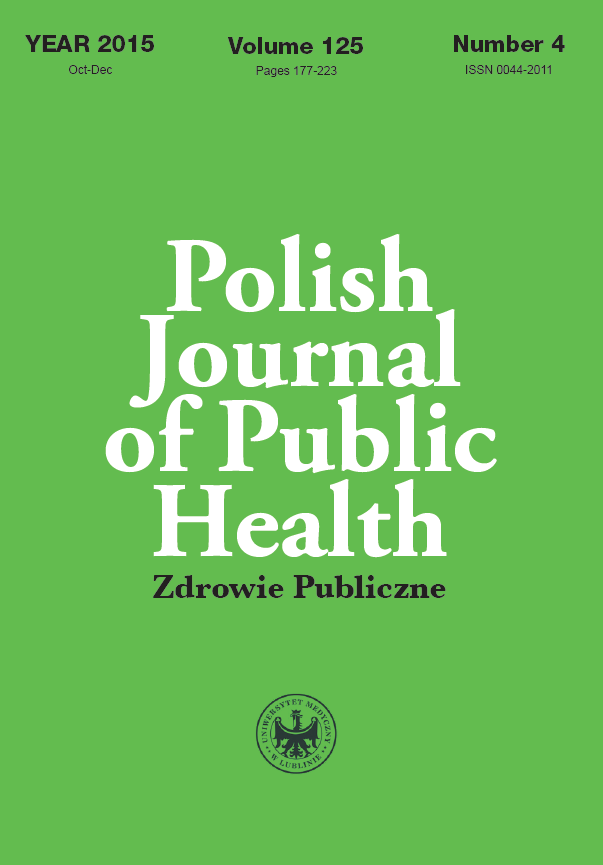Parental alcohol abuse and eating behaviors in adolescents
DOI:
https://doi.org/10.1515/pjph-2015-0053Słowa kluczowe:
parental alcoholism, eating disorders, adolescentsAbstrakt
Introduction. Parental alcohol abuse hinders a child’s development, which means that these children are more exposed to mental health problems.
Aim. The aim of this study was to analyze the link between the intensity of eating disorders in youngsters and family alcoholism.
Material and methods. The study was conducted among adolescents in the Lubelskie province. 1766 students, aged 12 to 22 were participants in the study. The authors used a method called Eating Disorder Inventory, as well as a self-designed questionnaire that included assessing the characteristics of every family.
Results. The findings of this study show that increased symptoms of eating disorders in children and teenagers correlates with alcohol dependency in the family. Adolescent children of alcoholics have higher levels of conflict identifying feelings and emotions (hunger, security) correctly. They were more likely to deem their actions as ineffective, as well as they were more frequently prone to binge eating than individuals who were not affected by drinking parents.
Conclusions. There is a need for some future work and preventive measures to be taken in families affected by problem drinking.
Bibliografia
1. Borgart EJ, Meermann R. Stationare verhaltenstherapeutische Behandlung von Anorexie und Bulimie. In: M. Zielke. Angewandte Verhaltensmedizin in der Rehabilitation. Berlin: Pabst Science Publishers 2001; p. 275-307.
2. Bulik CM. Drug and alcohol abuse by bulimic women and their families. Am J Psychiatry. 1987;144:1604-6.
3. Śmiarowska M, Kamiński R, Mikołajczyk E, et al. Wpływ środowiska społecznego na nasilenie objawów jadłowstrętu psychicznego – badanie wstępne. Adv Clin Exp Med. 2006;15(1):89-95.
4. Schmidt U, Humfress H, Treasure J. The role of general family environment and sexual and physical abuse in the origins of eating disorders.
5. Eur Eat Disord Rev. 1997;5(3):184-207.
6. Garner DM, Olmsted MP, Polivy J. The development and validation of a multidimensional Eating Disorder Inventory for anorexia nervosa and bulimia. Int J Eat Disord. 1983;2:15-34.
7. Kog E, Vandereycken W. Family characteristics of anorexia nervosa and bulimia: a review of the research literature. Clin Psychol Rev. 1985;5:159-80.
8. Vanderlinden J. Anorexia nervosa overwinnen. Tielt: Lannoo; 2002.
9. Garcia-Vilches I, Badia-Casanovas A, Fernandez-Aranda F, et al. Characteristics of bulimic patients whose parents do or do not abuse alcohol. Eat Weight Disord. 2002;7(3,23):2.
10. Harris M, Cumella EJ. Eating Disorders Across the Life Span. J Psychosoc Nurs Mental Health Servic. 2006;(44):4.
Pobrania
Opublikowane
Numer
Dział
Licencja
Prawa autorskie (c) 2016 Polish Journal of Public Health

Praca jest udostępniana na licencji Creative Commons Attribution-NonCommercial-NoDerivatives 3.0 Unported License.


